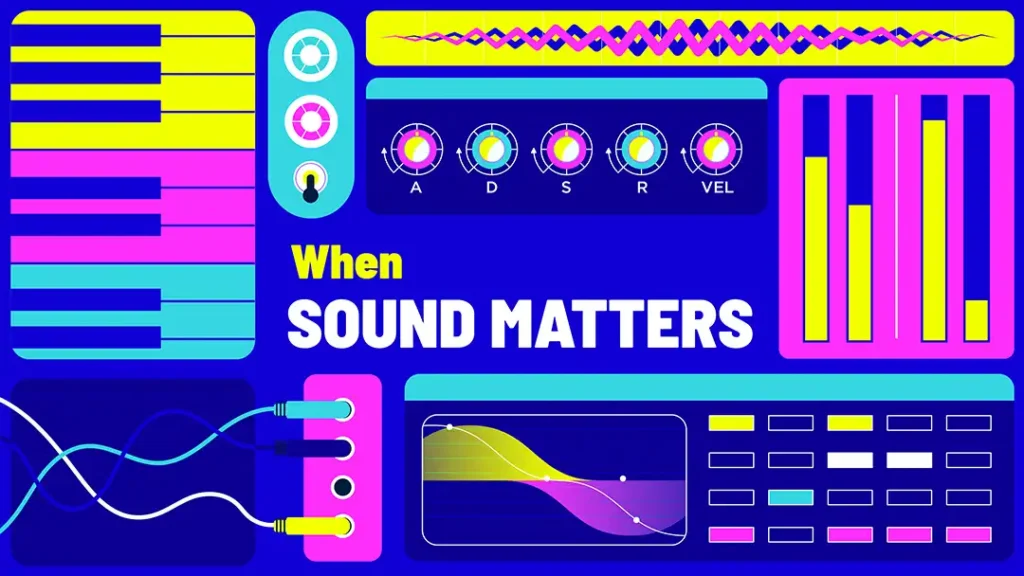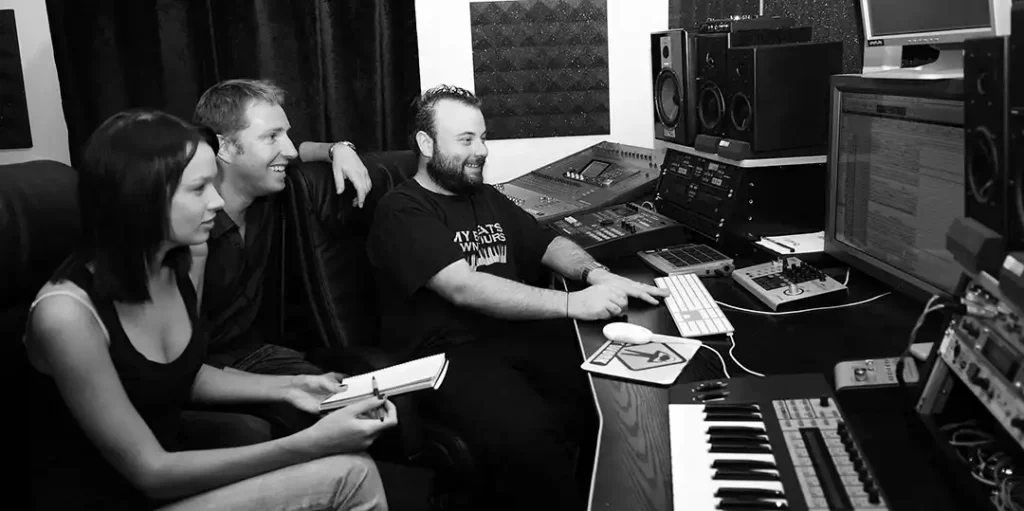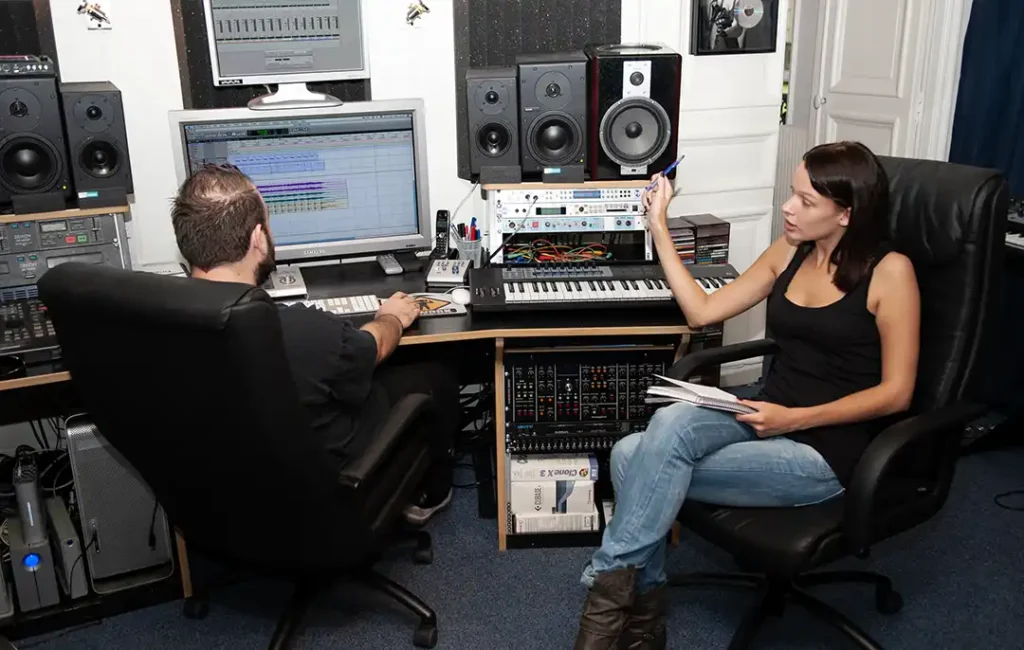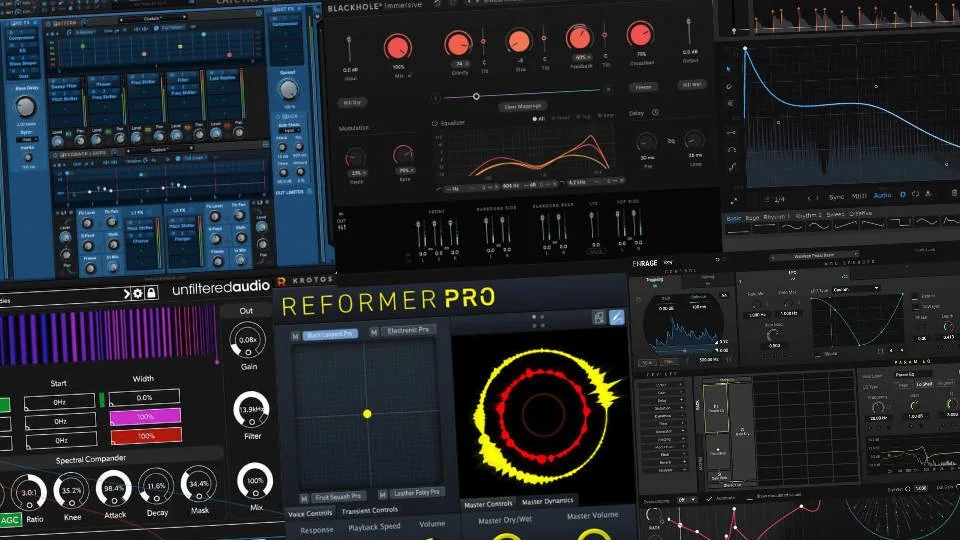Sound Design for Motion Graphics

Over the past 10 years, motion graphics videos have evolved to become a powerful means of visual storytelling, captivating audiences across various industries. As we continually push the boundaries of creativity, another essential aspect often goes unnoticed, it’s the vital role of Sound Design!
Beyond Visual: Sound Design for Motion Graphics Defines Modern Trends
Sound design involves incorporating various audio elements such as sound effects (FX), short sounds, music waves, and music loops to enhance specific moments and create a more captivating and interesting motion design experience for viewers. Sound design also requires working with multiple audio tracks, including dialogue, music, and sound effects, which are combined in the final mix before integration into the final production.
Mixing these audio tracks is essential to achieving a cohesive sound that enhances the animation. Motion graphics artists often draw inspiration from both music and visuals to develop creative sound design ideas. Inspiration from various sources can fuel the creative process in sound design for motion graphics.
This comprehensive approach to audio production aims to improve the overall quality and impact of the animation, making sound design crucial for evoking emotion and aligning the emotional tone of the animation with the visuals.
Introduction to Motion Graphics and the Role of Sound
Motion graphics is a creative discipline that blends graphic design with video production to produce visually compelling content, from animated logos and brand identities to explainer videos and advertisements. While the visual elements are often the first thing to capture the audience’s attention, sound design plays an equally vital role in shaping the overall experience. By integrating sound effects, music, and other audio elements, motion graphics artists can create an immersive audio experience that perfectly complements the visuals.
Thoughtful sound design not only enhances the emotional impact of a video but also helps draw attention to key visual elements, clarify complex ideas, and add depth to abstract scenes. Whether it’s the subtle use of background music in explainer videos or the strategic placement of sound effects to highlight movement, the right audio can transform a motion graphics project into a truly memorable and engaging experience for the audience.
The Art of Audio Storytelling: More Than Just Background Noise
Let’s be clear: it’s not about hastily adding sounds that make no sense or using crude effects throughout the video. Our brains are accustomed to hearing sounds that match visual movements, which enhances the realism and emotional impact of motion graphics. Viewers expect to hear sounds that correspond to the visuals, making the experience more immersive. Similar to other pitfalls in animated videos, like poorly delivered voiceovers or the use of graphic templates that make the film seem repetitive, it’s crucial to genuinely work on each individual soundtrack.
The importance of voice in conveying emotion and bringing animated characters to life cannot be overstated. This involves strategically selecting and crafting these sound elements, including creating sound effects with expert tips, to evoke emotions and maintain the viewer’s attention throughout the visual journey.
Types of Sound: Building Blocks of Sonic Identity
The sonic identity of a motion graphics project is built from a combination of sound effects, music, and human voice; each serving a unique purpose. Sound effects are essential for grounding animations in reality, adding a sense of authenticity and immersion by matching sounds to on-screen movements. For example, the sound effect of footsteps in an animated scene can make a character’s journey feel tangible and relatable.
Music sets the overall tone and mood, guiding the audience’s emotions and reinforcing the story’s atmosphere, whether it’s an upbeat track for a lively animation or a gentle melody for a more contemplative scene. Voiceovers provide context and narrative, helping to communicate the message clearly and connect with viewers on a personal level. By carefully selecting and blending these audio elements, motion graphics artists can create a cohesive and impactful sonic identity that enhances every aspect of the video.
When Visuals Meet Sound Design: Creating Emotional Synchronization
The synergy between visuals and sound is essential for producing impactful motion graphics. Rhythm in both music and sound effects plays a crucial role in the timing and pacing of motion graphics, enhancing their emotional impact. A well-designed soundtrack can breathe life into certain sequences, giving them a dynamic and engaging dimension. This synchronization creates a more immersive experience for viewers.
For instance, an explosive action sequence accompanied by adrenaline-pumping music intensifies excitement, while a serene landscape paired with calming ambient sounds elicits tranquility. This synchronization not only enhances the overall user experience but also reinforces the branding and message behind motion graphics, resulting in an immersive experience that draws the audience deeper into the story.

The Creative Process: Collaboration Between Motion and Sound Designers
The creative process of integrating sound into motion graphics requires meticulous planning and collaboration between the sound designer and the motion graphics artist. Interactive sound experiences are created using specific techniques during the sound design process, ensuring that audio elements are thoughtfully developed to complement the visuals.
Before diving into sound design, a thorough understanding of the project’s purpose and narrative is essential. Subsequently, the creation of a sound palette that aligns with the project’s tone, style, and target audience begins. This includes selecting the right music tracks, recording custom sound effects with high-quality recordings from live instruments or MIDI orchestrations, and sometimes incorporating high-quality voiceovers or dialogues. Voices provided by voice actors bring emotional expression and personality to animated characters, enhancing character development and the overall impact of the sound design.
Furthermore, precise timing and synchronization of sound with visual elements demand careful attention to detail. Motion designers often work with visual cues, such as keyframes and transitions, to ensure that sound elements seamlessly enhance the narrative. It is also important to align the sound palette with the visual style of the project to create a cohesive and immersive experience.

Science-Backed Impact: How Sound Enhances Memory and Brand Recall
A study published in the Journal of Consumer Research titled “When Sound Influences Taste: A Study of the Interaction between Red Bull Energy Drink and Upbeat Music” (Spence & Wang, 2015) demonstrated that music can influence the taste perception of a beverage, highlighting how audio stimuli impact emotional responses.
There are many examples of how sound design enhances narratives across different genres. For instance, in science fiction films, sound is used to emphasize futuristic atmospheres and heighten emotional impact. A classic example is Star Wars, which is renowned for its distinctive sound effects identity that has influenced sound design throughout the industry.
Sound design can also enhance the narrative flow of motion graphics. By carefully synchronizing sound with visual elements and visual effects, motion designers guide the viewer’s attention, creating a seamless and memorable storytelling experience. The sound acts as a guiding force, directing the audience’s focus to critical points in the animation or video.
A multi-sensory experience contributes to better information retention. When viewers receive information through multiple senses, such as sight and sound, their brains process and store the information more effectively, leading to improved recall of the content. A study published in the journal Learning and Instruction titled “The Impact of Multimodal Presentation Modes and Perceptual Learning Styles on Learning Performance” (Mayer & Moreno, 2002) demonstrated that using multiple sensory modalities, like visuals and auditory cues, led to better learning outcomes compared to using only one mode of presentation.
Additional research published in the Journal of Marketing Research titled “The Impact of Sensory Marketing on Brand Awareness: A Study on the Sense of Sound” (Alessandri et al., 2015) found that using sound in marketing campaigns significantly improved brand awareness and recall.
Sound as Your Storytelling Guide: Directing Attention Through Audio
By leveraging these findings and incorporating sound design into their motion graphics projects, brands and companies can create content that not only pleases the eye but also resonates deeply with the audience on an emotional and cognitive level, resulting in a more impactful multi-sensory experience.
The process of sound design can be fun and engaging, especially when experimenting with different sound fx to create unique audio elements. Integrating sound fx is essential for enhancing various visual elements in motion graphics, making the overall experience more dynamic and immersive. In marketing, this can translate to higher conversion rates and better brand recall.
Sound design plays a crucial role in enhancing the quality and effectiveness of motion graphics films and all animation projects, elevating the overall experience and leaving a lasting impression on viewers. The seamless integration of sound with visuals adds a new dimension.
Advanced Sound Techniques: Elevating the Experience
To truly captivate audiences, motion graphics artists and sound designers are increasingly turning to advanced sound techniques. One powerful approach is the use of 3D audio, which positions sounds in a three-dimensional space, making the viewer feel as if they are inside the scene. Layering sound textures and ambient sounds adds richness and detail, creating a more immersive environment that draws the audience deeper into the story.
Sound designers can also experiment with dynamic sound effects that react to user interactions, especially in interactive or web-based motion graphics, offering a more engaging and personalized experience. Incorporating original music and unique sound effects further distinguishes a project, giving it a signature sound that stands out. By leveraging these advanced techniques, creators can push the boundaries of sound design and deliver motion graphics projects that are not only visually stunning but also sonically unforgettable.

Best Practices for Sound in Motion Graphics
Achieving a harmonious blend of sound and visuals in motion graphics requires a thoughtful approach to sound design. Start by keeping the audio elements simple and purposeful, avoid cluttering the soundtrack with unnecessary sound effects that could distract from the core message. Use sound effects strategically to enhance, not overpower, the visual elements, ensuring each sound serves a clear purpose within the project.
Carefully balance the volume levels of all audio elements, from background music to dialogue and sound effects, to maintain clarity and prevent listener fatigue. It’s also essential to test the final mix across different devices and playback environments, ensuring the sound design remains effective and consistent for all viewers. By following these best practices, motion graphics artists can create audio experiences that elevate their projects and leave a lasting impression on their audience.
Looking Forward: The Future of Sound in Motion Graphics
The future of sound in motion graphics is bright, driven by rapid advancements in technology and creative tools. Artificial intelligence and machine learning are beginning to revolutionize the process of creating and editing sound effects, making sophisticated sound design more accessible to a broader range of creators. As virtual and augmented reality become more prevalent, the demand for immersive audio experiences that perfectly match high-fidelity visuals will only increase.
Sound designers will need to develop new skills and techniques to create realistic, interactive audio environments that enhance the sense of presence and engagement. By embracing these innovations and staying ahead of emerging trends, motion graphics artists and sound designers can continue to push the boundaries of what’s possible, crafting future projects that captivate audiences with both sight and sound.